
Plant Sap Analysis
Boost efficiency and quality, minimize fertilizer,
and maximize profitability
Yapraq eamlessly incorporates essential information regarding nutrient levels within plant sap, the present nutritional status of plants, and field-specific details. Using Artificial Intelligence and Algorithms, this information is processed to deliver accurate insights and personalized nutrition recommendations tailored to specific fields.
Boost efficiency and quality, minimize fertilizer, and maximize profitability
Yapraq seamlessly incorporates essential information regarding nutrient levels within plant sap,
the present nutritional status of plants, and field-specific details. Using Artificial Intelligence and Algorithms, this information is processed to deliver accurate insights and personalized nutrition recommendations tailored to specific fields.
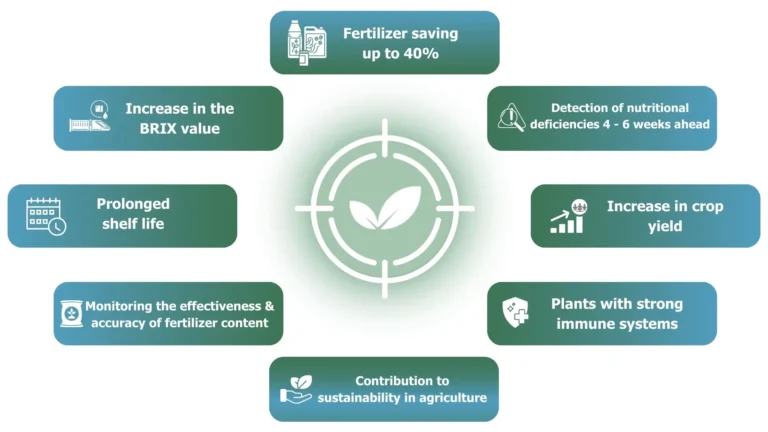
Up to 40%
Fertilizer Saving
Prolonged
Shelf Life
Nutritional Deficiency
Detection 4-6 Weeks Prior
Crop Yield
Increase
Increase
in the BRIX Value
Plants with a
Stronger Immune System
Monitoring Fertilizer
Effectiveness & Accuracy
Advancing Sustainable Agriculture
Let's Talk - Share Your Contact Information!

Up to 40% fertilizer savings

Detection of nutrient
deficiencies 4–6 weeks in advance

Resistance to
diseases & pests

Verification of fertilizer
content & effectiveness

Increased BRIX value, shelf life,
yield & harvest quantity

Plants with a
strong immune system
Let's Talk - Share Your Contact Information!
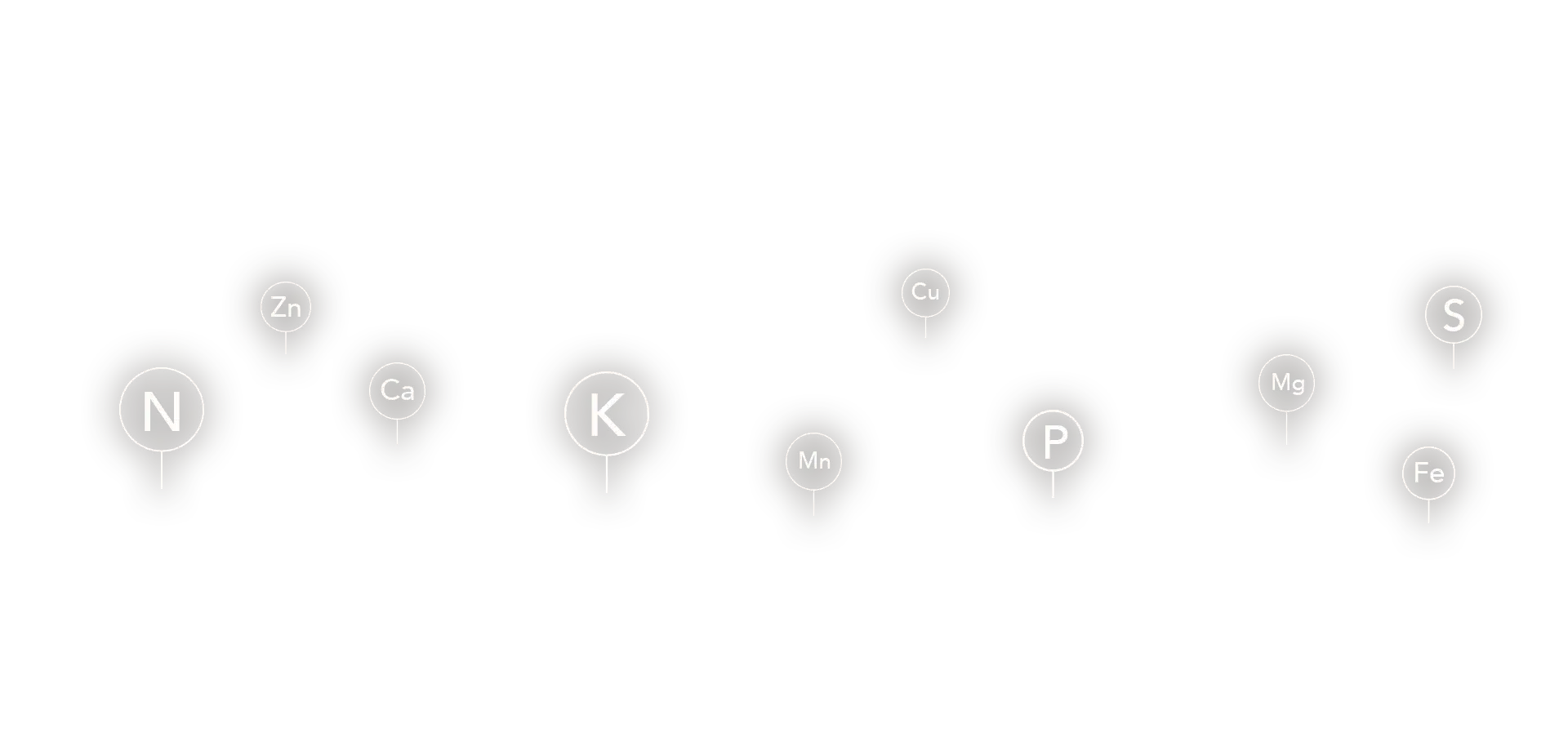

Connect with Your Plants on a Deeper Level with Plant Sap Analysis!
Connect with Your Plants
on a Deeper Level!
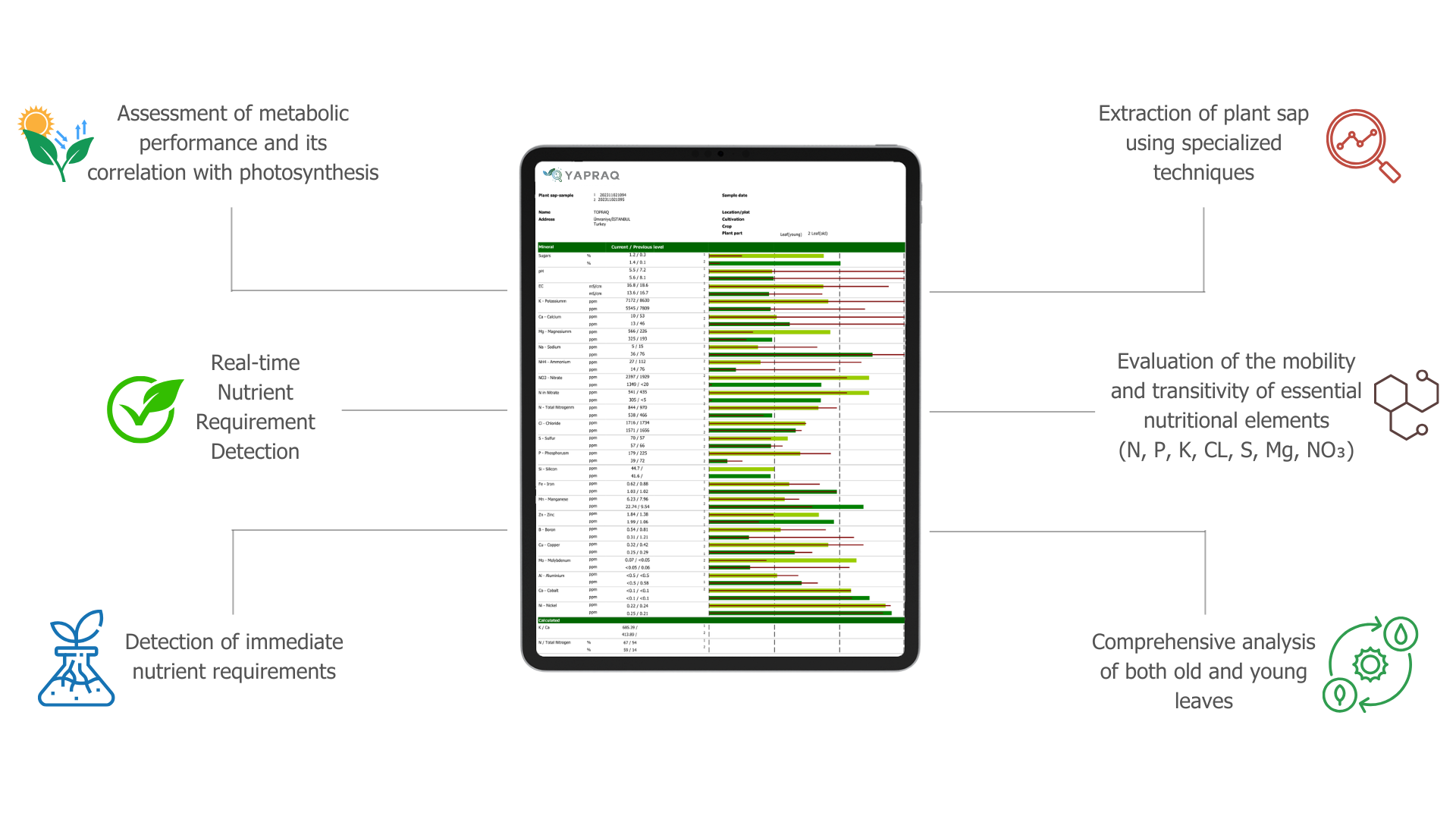
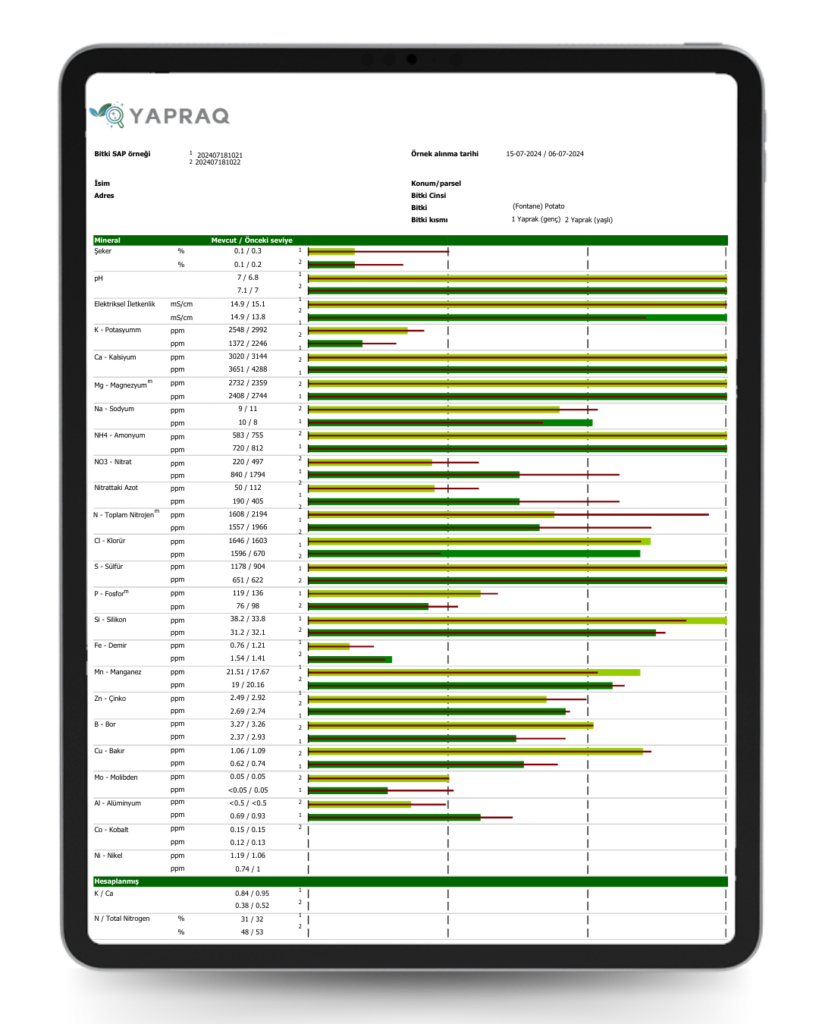

Extraction of Plant sap using specialized techniques

Evaluation of mobility and transitivity
of essential nutritional elements
(N, P, K, CL, S, MG, NO3)

Comprehensive analysis of
both old and young leaves

Assessment of metabolic
performance and its
correlation with photosynthesis

Real-time nutrient requirement
detection

Detection of immediate
nutrient requirements
Discover YAPRAQ's Packages!
Discover YAPRAQ's Packages!
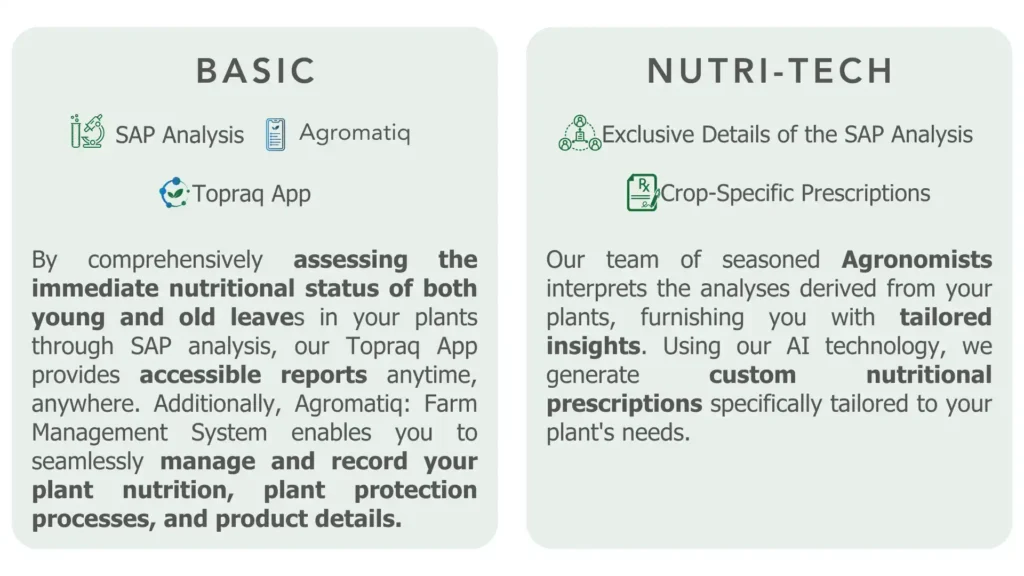
BASIC
-
 SAP Analysis
SAP Analysis
-
 Agromatiq
Agromatiq
-
 Topraq App
Topraq App
By comprehensively assessing the immediate nutritional status of both young and old leaves in your plants through SAP analysis, our Topraq App provides accessible reports anytime, anywhere. Additionally, Agromatiq: Farm Management System enables you to seamlessly manage and record your plant nutrition, plant protection processes, and product details.
NUTRI-TECH
-
 Exclusive Details of the SAP Analysis
Exclusive Details of the SAP Analysis
-
 Crop-Specific Prescriptions
Crop-Specific Prescriptions
Our team of seasoned Agronomists interprets the analyses derived from your plants, furnishing you with tailored insights. Using our AI technology, we generate custom nutritional prescriptions specifically tailored to your plant’s needs.
Process of Plant Sap Analysis
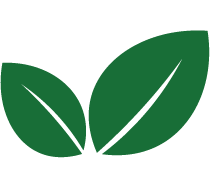

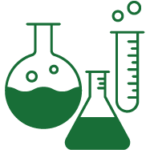
1
Collection of 60 young
and 60 old leaves
in a ziplock bag.
2
Shipment of the
leaves to the
closest Topraq hub.
3
Analysis
of the leaves
in the lab.
4
Prescriptions created
specifically for your
plant by AI
and Algorithms.



1
Collection of
60 young and
60 old leaves in
a ziplock bag.
2
Shipment of the
leaves to the
closest Topraq hub.
3
Analysis
of the leaves
in the lab.
4
Prescriptions created specifically
for your plant through the analysis
of the lab results by AI and Algorithms.
Our Success Stories with Plant Sap Analysis
Precision Nutrition Tailored by AI:
Fueling Success Through Field Data and Analysis
Precision Nutrition Tailored by AI: Fueling Success Through Field Data and Analysis
Precision Nutrition Tailored by AI:
Fueling Success Through Field Data and Analysis
TOPRAQ’s Supplementary Services
Embracing a Holistic Approach for the Success of Our Farmers!
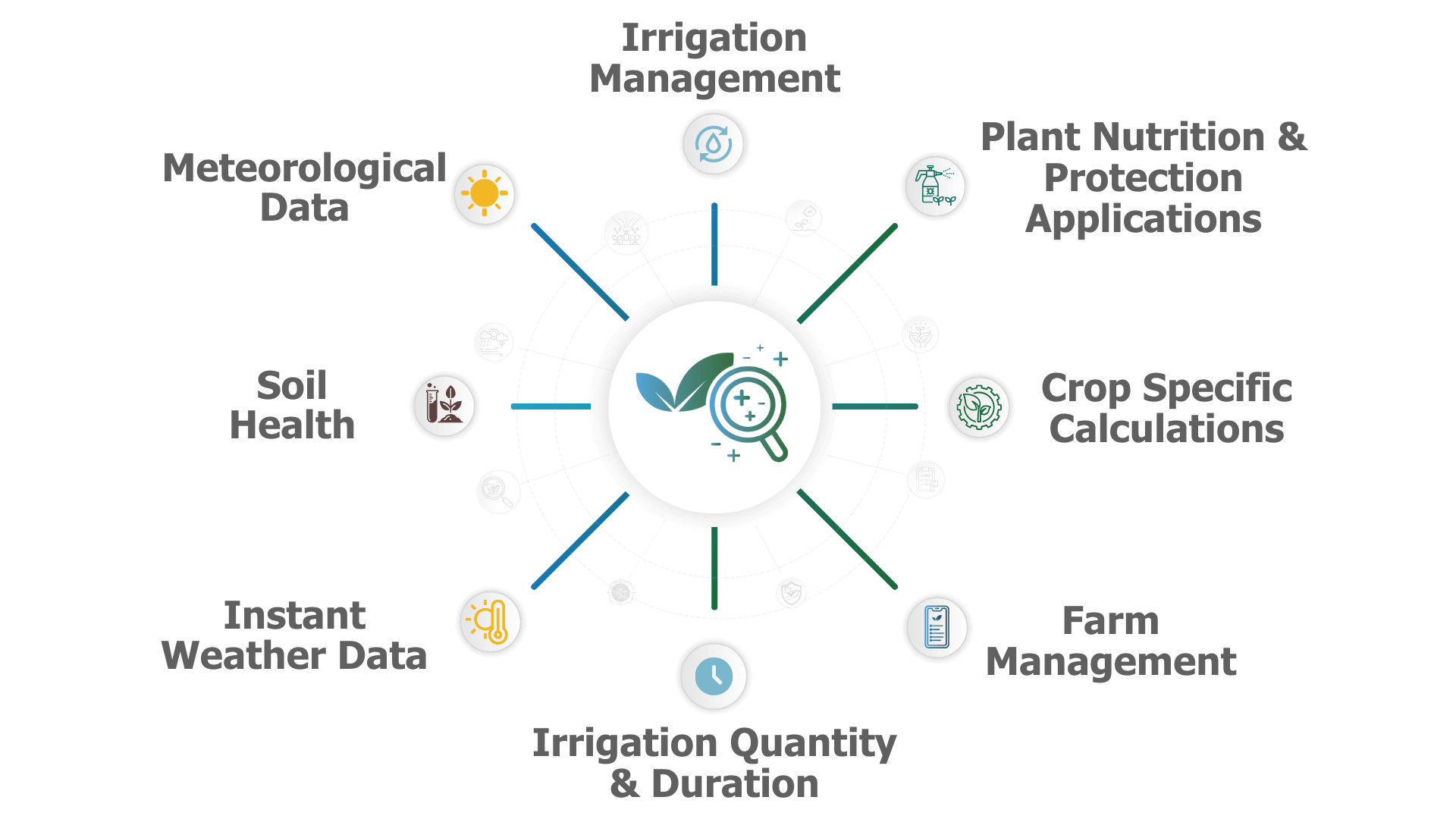

What is Plant Sap Analysis?
Plant sap analysis is a method used to evaluate the nutritional status, health, and development of plants. By analyzing plant sap in a leaf analysis laboratory, it is possible to identify nutrient deficiencies, detect the presence of diseases or pests, and assess overall plant health. Based on the results, tailored fertilization and care programs are recommended, enhancing plant productivity and health.

How is Plant Sap Analysis Conducted?
Here are the steps for conducting plant sap analysis:
Sample Collection: Carefully selected leaves are collected from the plant.
Sap Extraction: Sap is extracted from the samples using specialized techniques.
Chemical Analysis: The sap is analyzed for up to 23 nutrients, such as nitrogen, phosphorus, potassium, calcium, and magnesium.
Physical Analysis: Parameters like pH and electrical conductivity (EC) are measured.
Data Analysis and Reporting: A detailed report on the plant’s health, nutrient levels, and recommendations for care is prepared.

What is the Difference Between Traditional Leaf Analysis and Plant Sap Analysis?
Traditional leaf analysis involves examining dried or processed leaf samples in a leaf analysis laboratory to assess the plant’s nutrient status. While useful, it primarily provides a retrospective view of the plant’s nutrient levels, reflecting conditions from weeks or even months ago.
On the other hand, plant sap analysis offers a more advanced and real-time approach. By extracting sap directly from the leaves or stems, this method provides an accurate snapshot of the plant’s current nutritional status. Unlike traditional methods, plant sap analysis detects early-stage nutrient imbalances, allowing farmers to take immediate corrective actions. This proactive approach helps optimize fertilization, improve plant health, and maximize productivity, making plant sap analysis a superior tool for precision agriculture.

Why is Plant Sap Analysis important?
Plant sap analysis plays a critical role in sustainable farming and crop management for several reasons:
Detection of Nutrient Deficiencies: Helps identify which nutrients the plant lacks, allowing precise fertilization to enhance crop quality.
Disease and Pest Management: Enables early detection of diseases and pests for timely intervention.
Improved Productivity: Promotes healthy growth through balanced nutrition, maximizing yield.
Cost and Environmental Savings: Minimizes unnecessary fertilization and chemical use, reducing costs and environmental impact.
Support for Sustainable Agriculture: Ensures plant resilience and supports eco-friendly farming practices.

What is Traditional Leaf Analysis?
Traditional leaf analysis involves collecting samples from plant leaves and examining them in a leaf analysis laboratory. The results provide insights into the plant’s nutrient status, health, and potential disease or pest issues. Recommendations for nutrition and care are made based on the findings.

How is Traditional Leaf Analysis Conducted?
The leaf analysis procedure typically follows these steps:
Sample Collection: Representative leaf samples are collected, usually from the middle section of the plant during the growth period.
Cleaning and Drying: Samples are cleaned of dust and dried.
Laboratory Analysis:
Chemical Analysis: Evaluates nutrient content, such as nitrogen, phosphorus, and potassium.
Microscopic Analysis: Examines samples for pests or diseases.
Data Analysis and Reporting: The collected data is analyzed to determine plant needs.
Recommendations: Appropriate fertilization and care methods are suggested.

Where is Leaf Analysis Performed?
Leaf analysis is carried out in specialized laboratories, such as agricultural laboratories, universities, and private companies offering leaf analysis machine services. These facilities use advanced techniques to provide precise results.

What is Plant Analysis?
Plant leaf analysis is a process conducted to evaluate the nutrient status, health, and development of plants. Smart plant analysis is performed by examining plant tissues or leaf sap in plant analysis laboratories. Plant analysis is used to identify nutrient deficiencies, detect the presence of diseases or pests, and assess overall plant health. Based on the analysis results, fertilization and maintenance practices are tailored to meet the needs of the plants, enhancing their productivity and health.

How is Plant Analysis Performed?
Plant analysis involves evaluating the nutritional and health status of plants through laboratory procedures. This includes the chemical, physical, and microscopic examination of leaves, stems, or plant sap. Advanced plant sap analysis methods are used to simplify the process. Nutrient content or disease presence are identified, and necessary fertilization or treatment recommendations are provided.

Why is Plant Sap Analysis Important?
Smart plant analysis methods are critically important for determining the nutritional needs and health status of plants. Here are some key reasons why it is essential:
Detection of Nutrient Deficiencies: Plant analysis identifies which nutrients plants need, enabling accurate fertilization. This enhances plant productivity and quality.
Disease and Pest Management: Analyses help detect diseases and pests in plants at an early stage, allowing timely and effective treatment methods to be applied.
Increased Efficiency: With proper nutrition and care, plants’ growth potential is maximized, leading to improved agricultural productivity.
Economic Savings: By preventing unnecessary fertilization and pesticide use, plant analysis reduces costs and minimizes environmental impact.
Sustainable Agriculture: Healthy and well-nourished plants are more resilient and require fewer chemical interventions, supporting sustainable farming practices.
Plant analysis is an indispensable tool for achieving healthy and efficient agricultural production.

What is Next-Generation Plant Sap Analysis?
Next-generation plant sap analysis, also known as stem and leaf sap analysis, focuses on extracting sap from plant tissues for detailed chemical and physical examination. This innovative method measures nutrient levels directly in the plant, offering accurate insights into its nutritional needs. By using advanced plant sap analysis solutions, farmers receive tailored fertilization plans to optimize crop health and productivity.

Is There a Free Plant Analysis App?
Currently, Yapraq does not offer a free plant analysis app, but it provides access to advanced plant sap analysis and tools through its platform. These tools help farmers analyze sap results, monitor plant health, and receive customized recommendations for fertilization and care, ensuring efficient and data-driven crop management.
Nutritional Content, BRIX Level
Significant increase
in profitability
Extended shelf life
for your crops
Acting in alignment with real-time nutritional
data of your plants
High crop performance: Yield, Nutritional Content, BRIX Level
Significant increase
in profitability
Extended shelf life
for your crops
Acting in alignment with real-time nutritional
data of your plants
